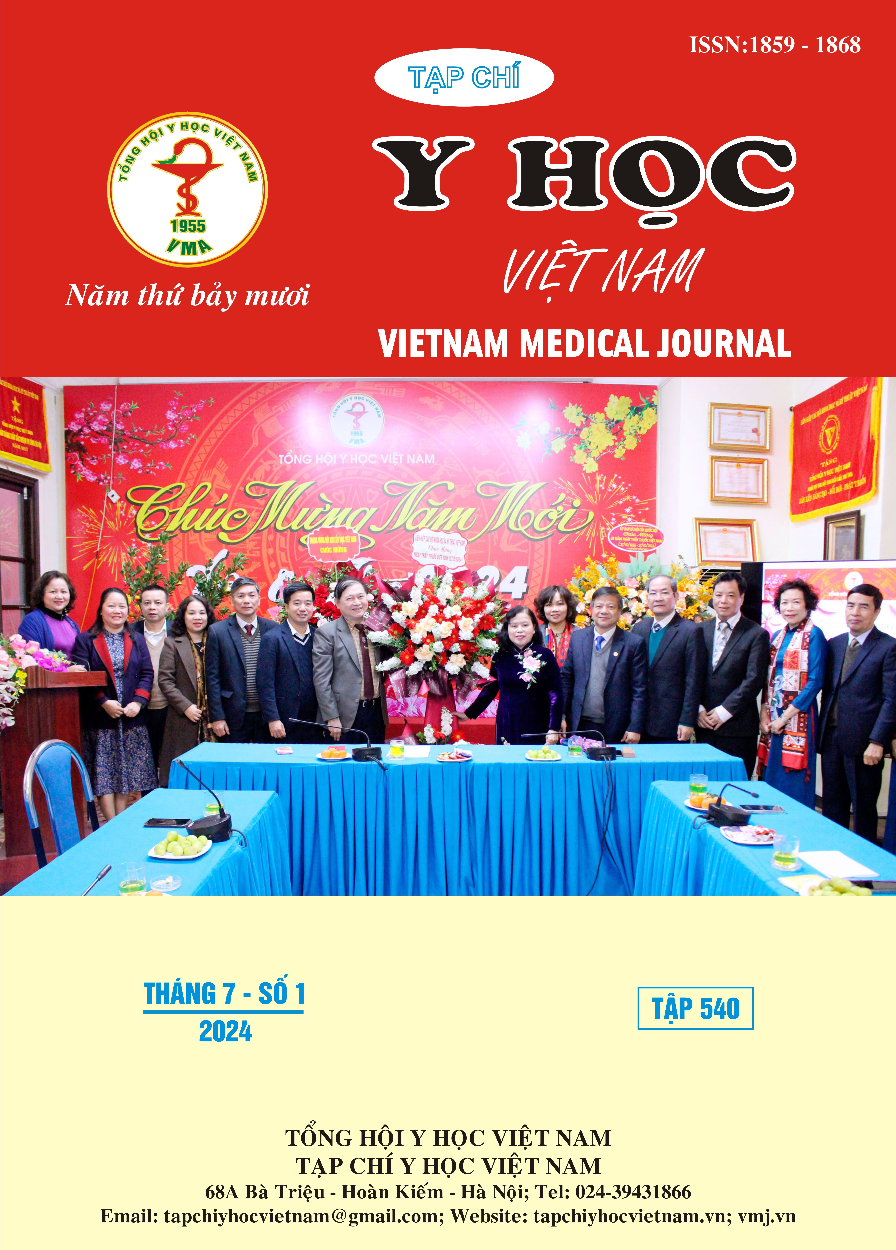QUANTIFYING SIGNAL INTENSITY ON ADC VIA WHOLE VOLUME AND SELECTIVE VOLUME MEASUREMENT IN DIFFERENTIATING BENIGN AND MALIGNANT TESTICULAR TUMORS ON MRI
Main Article Content
Abstract
Purpose: The study aims to determine the value of quantifying signal intensity according to the ADC histogram in distinguishing benign and malignant testicular tumors (TTs). Subjects and methods: A retrospective study was conducted on cases of TTs undergoing MRI scans, followed by surgical intervention with pathological results. The study measurable indices on the ADC histogram (mean, median, maximum, minimum, kurtosis, skewness, entropy, StDev, mpp, upp) using two methods of placing the Volume of Interest (VOI): encompassing the entire tumor mass (VOI-1) and selectively placing the VOI on the specific tumor mass excluding cystic or necrotic areas (VOI-2). A comparison was made between the diagnostic values distinguishing benign and malignant TTs of the two measurement methods. Results: The study involved 40 TMT cases, comprising 7 benign and 33 malignant cases. With the VOI-1 method, the ADC max, ADC skewness, ADC entropy, and ADC variance values in the benign TTs group were lower than those in the malignant group (p < 0.01), while the ADC min and ADC uniformity values in the benign TTs group were higher than those in the malignant group (p < 0.01). With the VOI-2 method, the ADC max, ADC skewness, ADC kurtosis, and ADC entropy values in the benign TTs group were lower than those in the malignant group (p < 0.01), whereas ADC min and ADC uniformity were higher (p < 0.01). The VOI -1 method showed higher reliability in predicting malignant TTs based on ADC max, ADC variance, and ADC skewness values with cut-off points (Sp, Se, AUC) of 1846.00 (75.8; 100; 0.905), 39198.39 (81.8; 85.7; 0.887), and 0.893 (57.6; 100; 0.797), respectively. Conclusion: Quantifying signal intensity on the ADC map is valuable in distinguishing benign and malignant TTs. The method of measuring the entire tumor volume demonstrates higher reliability than the selective method.
Article Details
Keywords
testicular cancer, benign testicular tumor, malignant testicular tumor, diffusion-weighted imaging, apparent diffusion coefficient map, histogram analysis.
References
2. Khan O, Protheroe A. Testis cancer. Postgraduate Medical Journal. 2007;83(984):624-632. doi:10.1136/pgmj.2007.057992
3. Tsili AC, Sofikitis N, Stiliara E, Argyropoulou MI. MRI of testicular malignancies. Abdom Radiol. 2019;44(3): 1070-1082. doi:10.1007/s00261-018-1816-5
4. Tsili AC, Sofikitis N, Pappa O, Bougia CK, Argyropoulou MI. An Overview of the Role of Multiparametric MRI in the Investigation of Testicular Tumors. Cancers (Basel). 2022;14(16): 3912. doi: 10.3390/cancers14163912
5. Pedersen MRV, Loft MK, Dam C, Rasmussen LÆL, Timm S. Diffusion-Weighted MRI in Patients with Testicular Tumors-Intra- and Interobserver Variability. Curr Oncol. 2022; 29(2):837-847. doi:10.3390/curroncol29020071
6. Wang W, Sun Z, Chen Y, et al. Testicular tumors: discriminative value of conventional MRI and diffusion weighted imaging. Medicine. 2021; 100(48): e27799. doi: 10.1097/MD. 0000000000027799
7. Moch H, Amin MB, Berney DM, et al. The 2022 World Health Organization Classification of Tumours of the Urinary System and Male Genital Organs—Part A: Renal, Penile, and Testicular Tumours. European Urology. 2022;82(5):458-468. doi:10.1016/j.eururo.2022.06.016
8. Min X, Feng Z, Wang L, et al. Characterization of testicular germ cell tumors: Whole-lesion histogram analysis of the apparent diffusion coefficient at 3T. European Journal of Radiology. 2018;98:25-31. doi:10.1016/j.ejrad.2017.10.030
9. Balasundaram P, Garg A, Prabhakar A, Joseph Devarajan LS, Gaikwad SB, Khanna G. Evolution of epidermoid cyst into dermoid cyst: Embryological explanation and radiological-pathological correlation. Neuroradiol J. 2019; 32(2):92-97. doi:10.1177/1971400918821086


